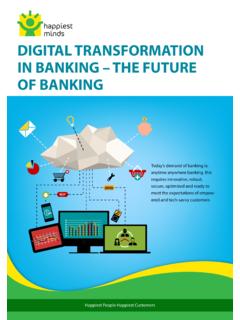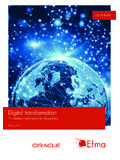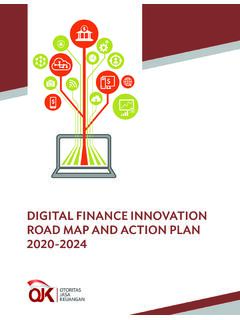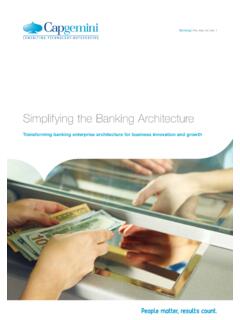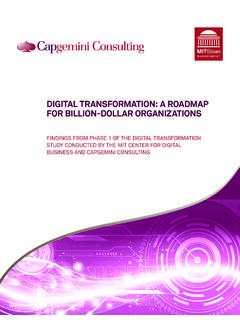Transcription of The Indian payments handbook – 2020–2025 - PwC
1 The Indian payments handbook . 2020 2025. December 2020. Preface Dear readers, It is our pleasure to bring to you The Indian payments handbook 2020 2025.' This is PwC's first annual publication focusing on India's digital payment industry landscape. In this report, we have analysed the evolution of the Indian payment ecosystem in the last few years, key trends that have shaped the Indian payment space and how the ever- dynamic payments market will shape up by 2025. In the last couple of years, we have seen various new and faster payment modes emerge and establish their presence in the Indian digital payment space.
2 This has largely been possible due to regulators introducing new initiatives and products to push digital payments , and industry stakeholders encouraging customers to shift from paper-based to digital payment modes. Based on insights gathered from our experience of working with key stakeholders in this space from across the world, we have analysed a few trends on how the digital payment landscape will be defined by overlay services, invisible payments , contextual payments and offline payments in the future .
3 We have assessed the impact of the COVID-19 crisis on India's digital payment industry and how the pandemic has changed the behaviour of customers using digital payment modes. Usage of digital payment modes will see a V-shaped recovery in the future , which is evident from the recent performance and growth in digital transactions. The benefits of shifting towards digital payments are visible in India. These benefits will witness an upward trend, marking a significant change in how the Government, corporates and citizens adopt new technologies for their transactions.
4 We truly believe that India is at the forefront of a digital payment revolution that will have a significant impact not only on the South Asian region, but worldwide as well. There are great learnings from our India experience that can be shared with the world. We are fortunate that our experience of transformation in the payments space has allowed us to learn and grow. We hope you will find this report to be a good and insightful read. Mihir Gandhi Partner and Leader, payments transformation PwC India 2 | PwC The Indian payments handbook 2020 2025.
5 Table of contents I. The new normal for payments 06 II. future of top payment modes 10. III. How will the market shape up? 28 IV. Conclusion 33. 3 | PwC The Indian payments handbook 2020 2025. Executive summary The Indian digital payment space has seen extraordinary growth in the last few years, with the volume of transactions increasing at an average compound annual growth rate (CAGR) of 23%.1 The launch of new and innovative payment products like Unified payments Interface (UPI), National Electronic Toll Collection (NETC) and Bharat Bill Pay Service (BBPS) have firmly placed the digital payment industry on an upward growth trajectory.
6 With new payment technologies and use cases across sectors emerging, this growth momentum is expected to continue. COVID-19 will be a minor blip in the growth story and then prove to be an inflection point as transactions saw a minor drop in the early months of FY 2020 21 and have now begun to go back to pre COVID-19 levels. We have seen a V-shaped recovery post the pandemic, as the outbreak accelerated the shift to digital platforms. Businesses are now looking to integrate both online and offline channels in order to provide an omnichannel experience to their customers.
7 UPI recorded the highest number of transactions ever in September and volumes have already gone back to pre-lockdown levels. We've also seen a similar recovery in NETC transactions. Growth in digital payments in India has been driven by multiple factors such as the launch of new and innovative payment products, increasing smartphone adoption, a growing need for faster payment modes, and a strong push from the Government and regulators towards adoption of digital channels. Prior to 2010, digital transactions saw single-digit growth.
8 From 2010 2016, this figure rose to 28% owing to the launch of faster payment modes in the country and jumped to 56% in 2016 17 following demonetisation. COVID-19 has further accelerated the shift to digital payment modes. Together, these factors are likely to create a revenue pool of INR 2,937 billion by 2024 25 for payment players a figure that stood at INR 1,982 billion in 2019 20. Since its launch in 2016, UPI , has seen an exponential CAGR of 414% until FY19 20 and has become the most preferred payment product in terms of volumes.
9 Person-to-merchant (P2M) payment, which accounts for approximately 40% of the total number of UPI transactions, has become the preferred mode of payment for both online and offline merchants. We expect the volume of UPI transactions to grow by seven times by 2025. Apart from UPI, BBPS and NETC have also grown at a similar pace. Both BBPS and NETC are growing at a CAGR of 500% and 123% respectively since 2018, with the help of a government and regulatory push. Banks and non-banking financial companies are now more focused on providing integrated solutions.
10 digital payments have evolved from being viewed as a cost centre for banks to a revenue centre and a key lever for customer acquisition. Financial companies have stepped up their efforts to strengthen their payment infrastructure and have started offering other adjacent services such as lending, wealth management, microinsurance, and use of data analytics to offer for more customised solutions for customers. 1 PwC analysis of data from the RBI and NPCI. 4 | PwC The Indian payments handbook 2020 2025.











